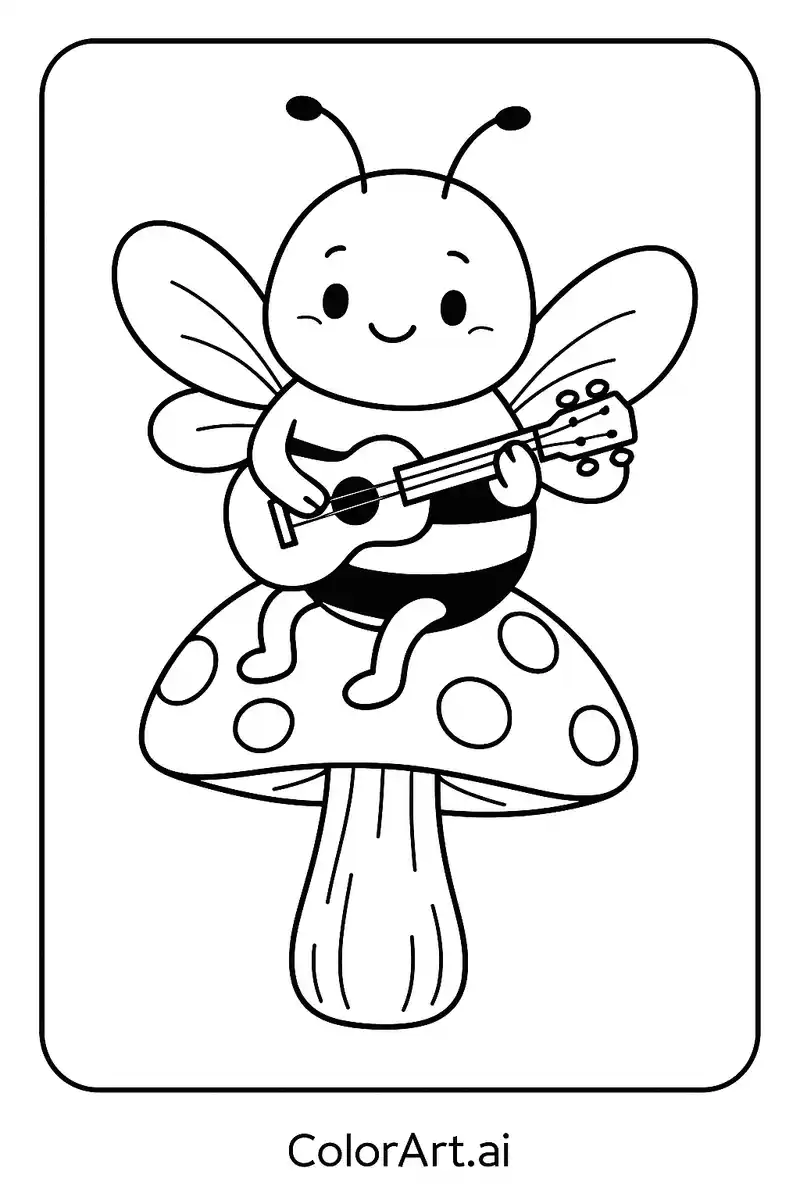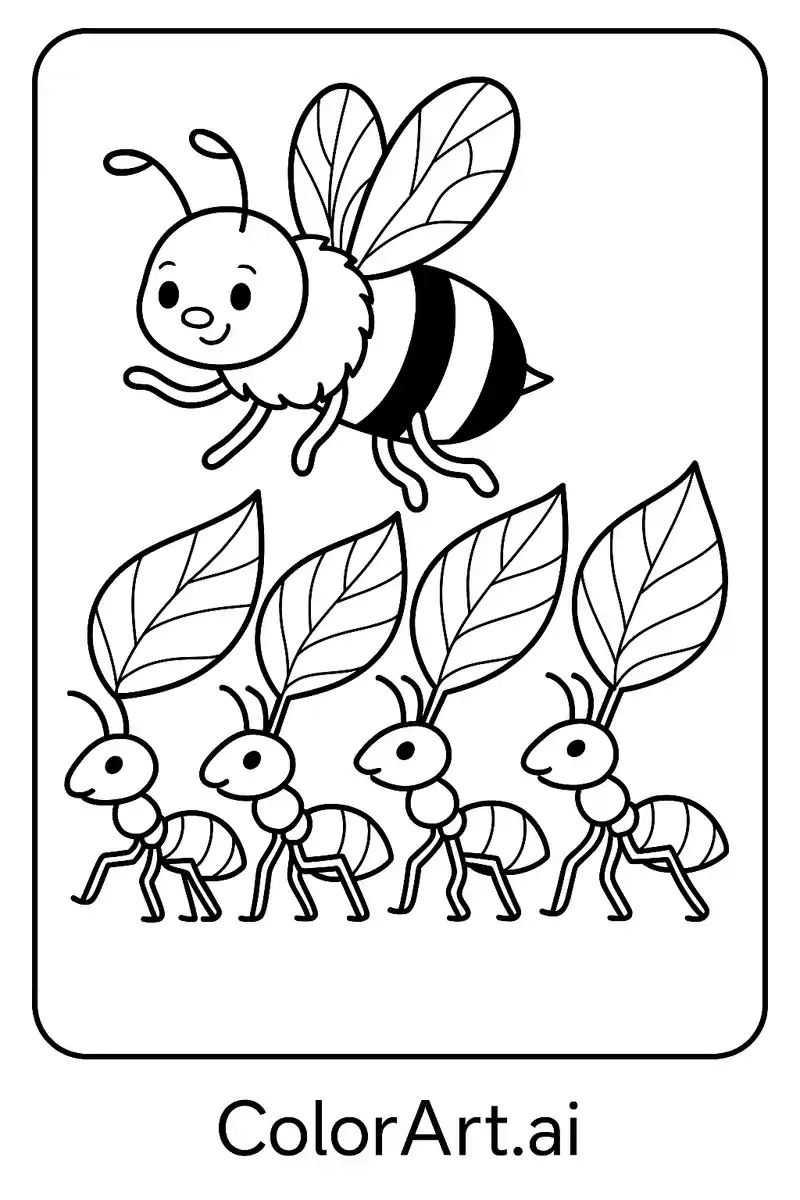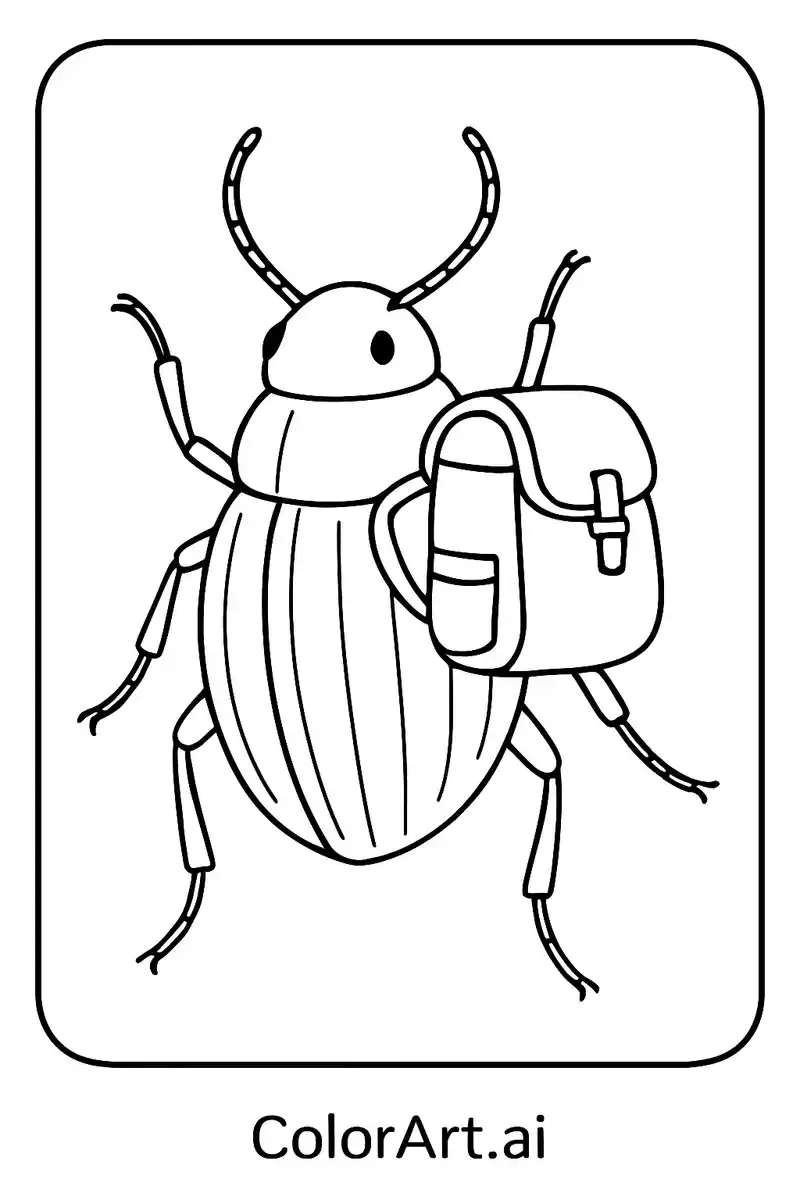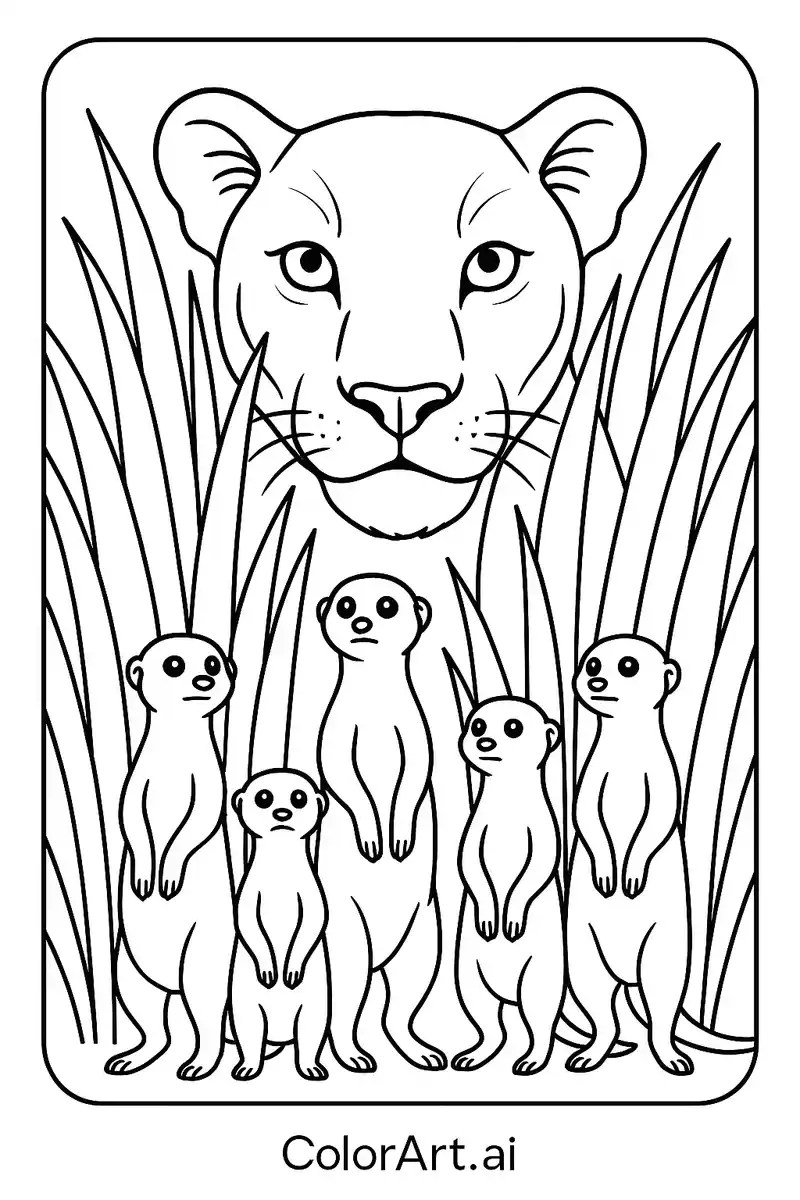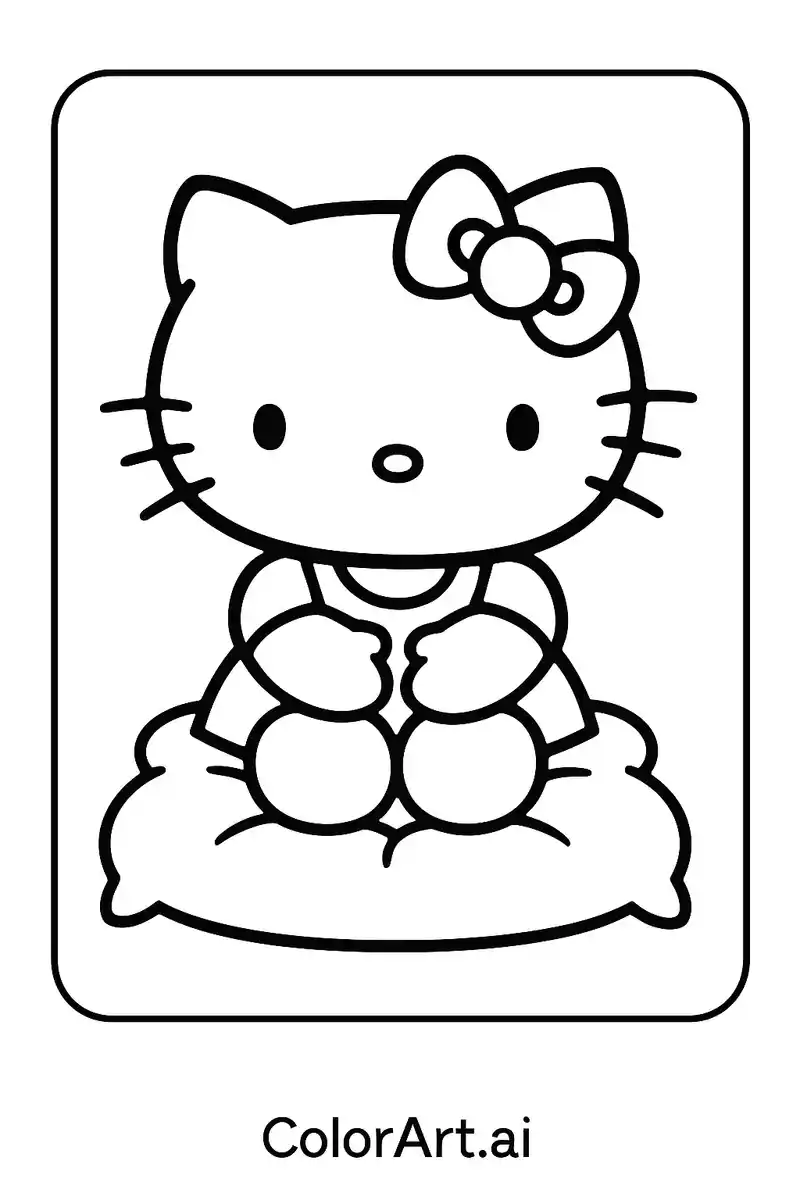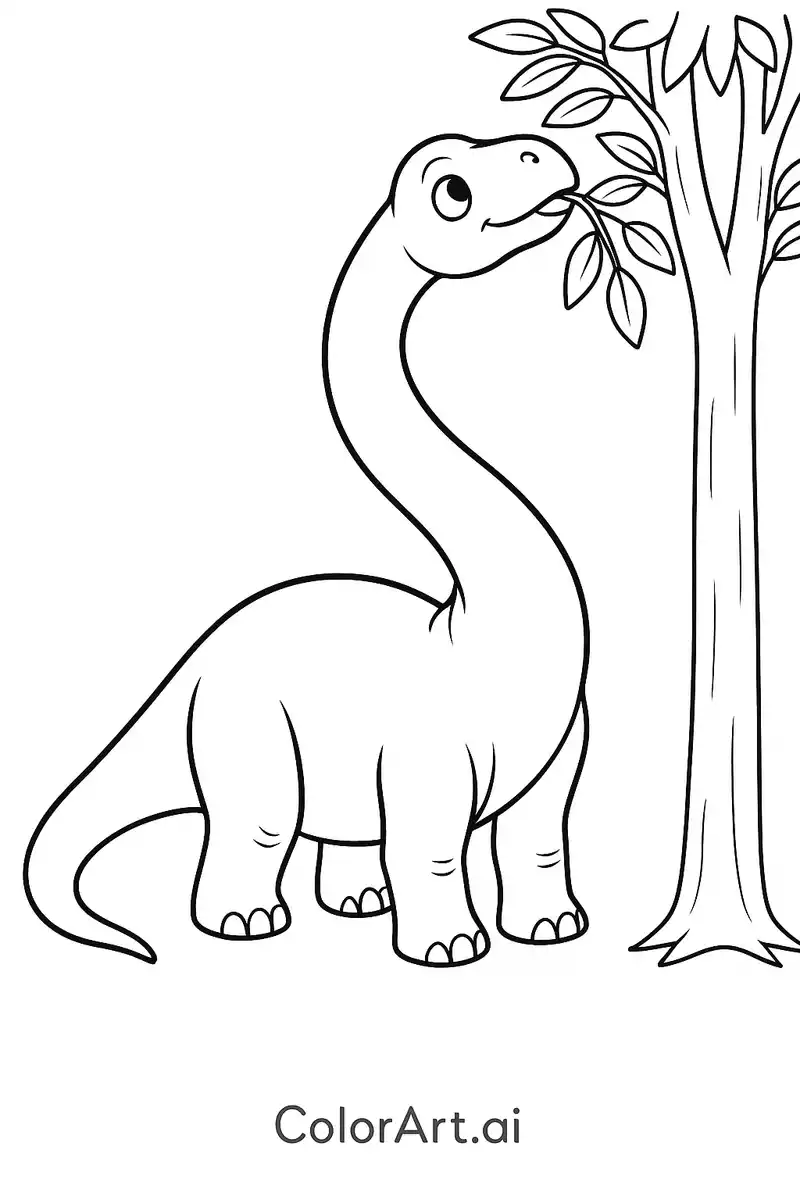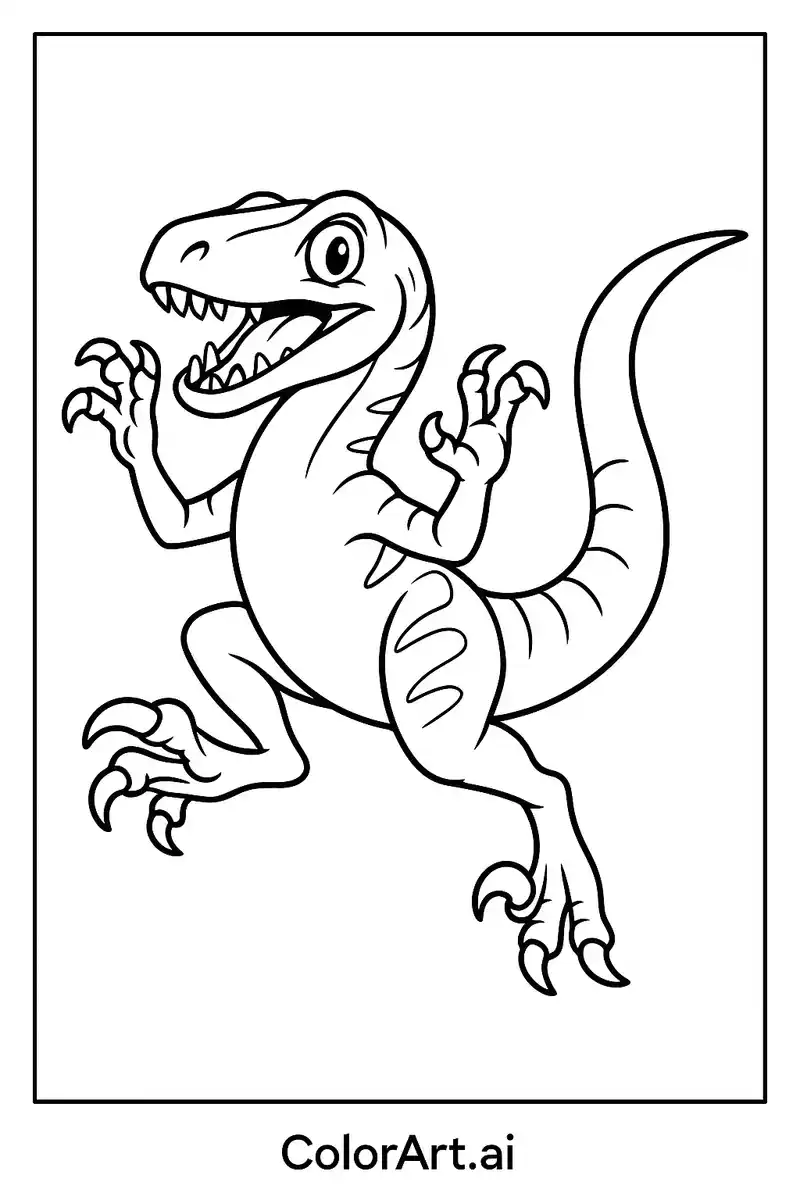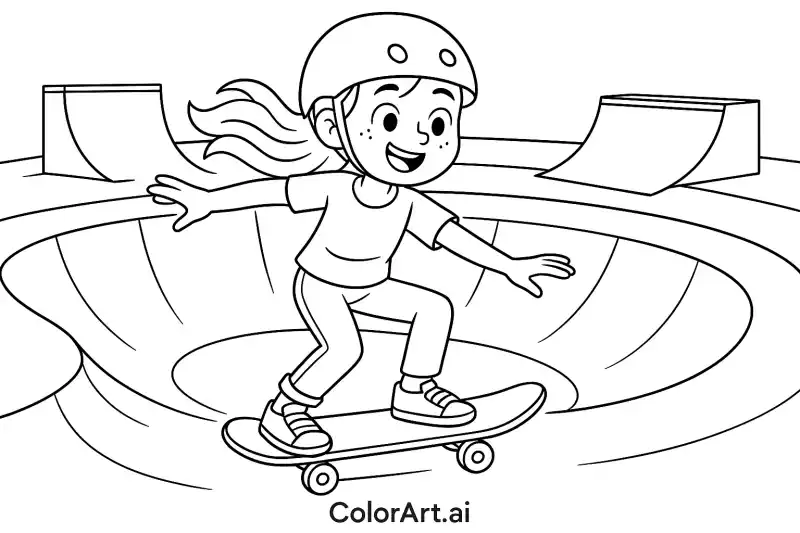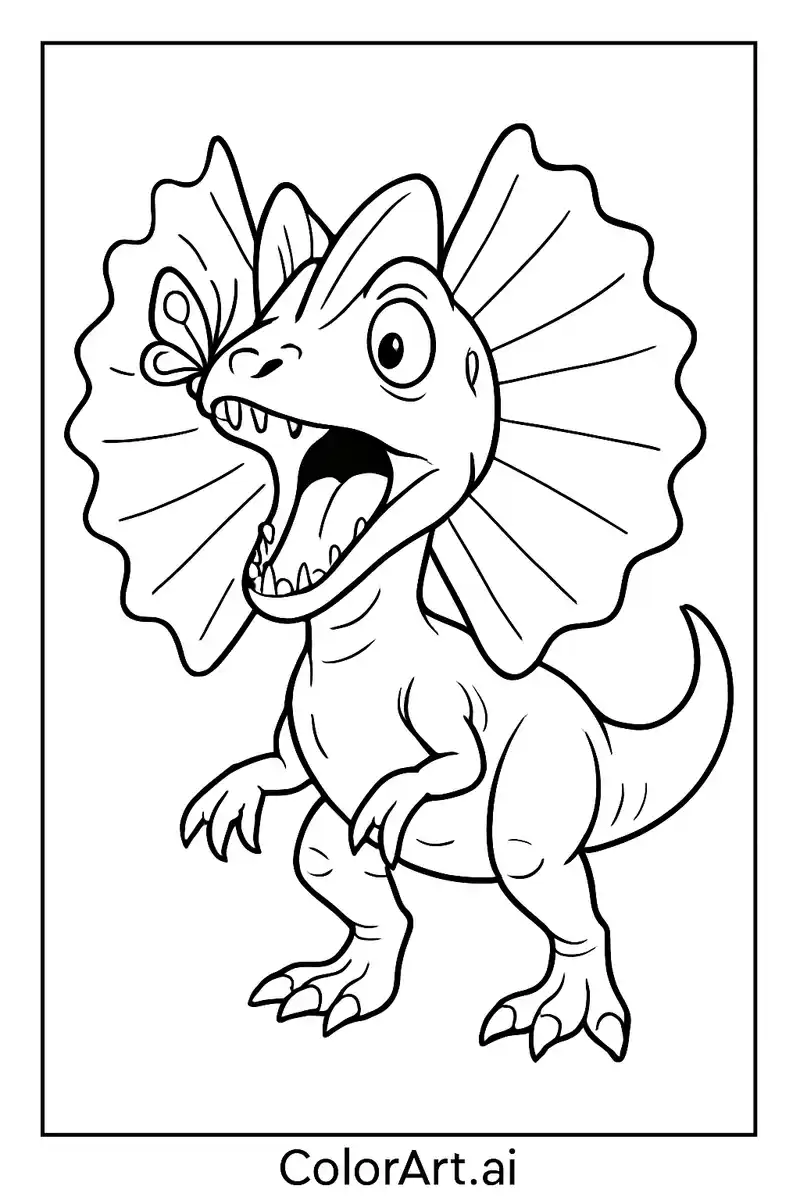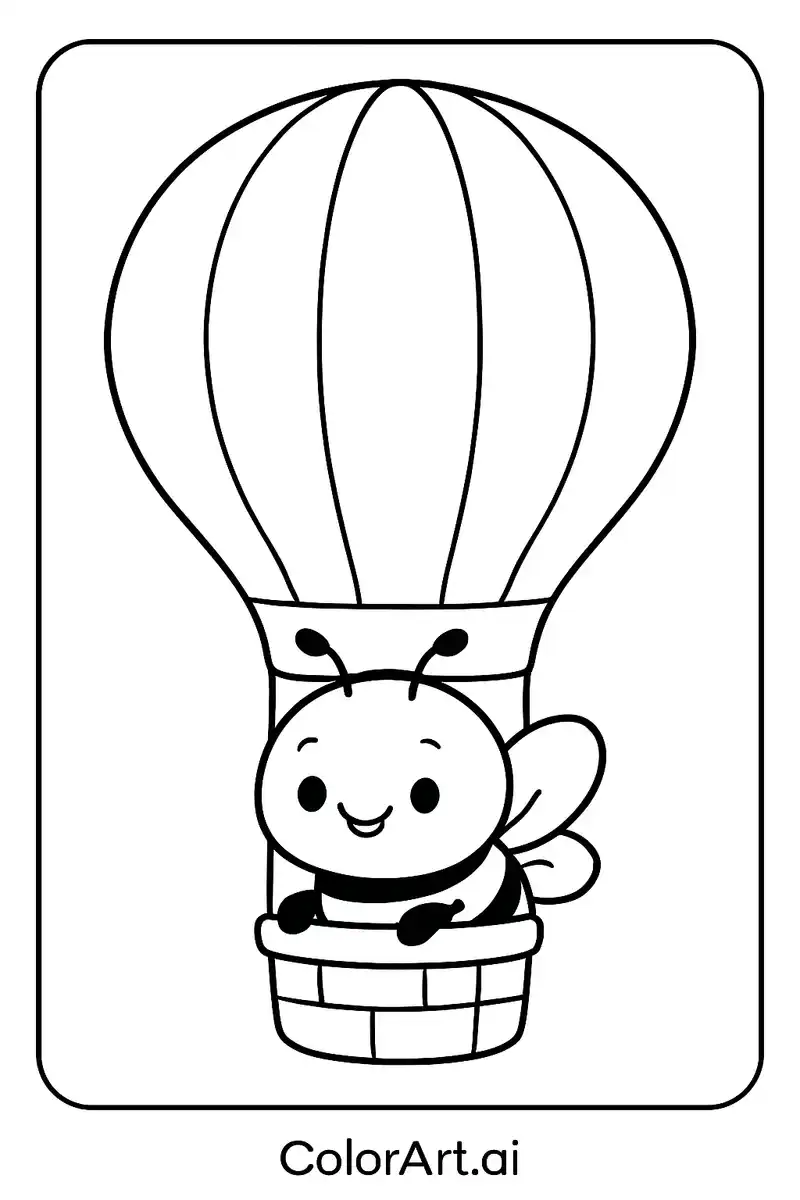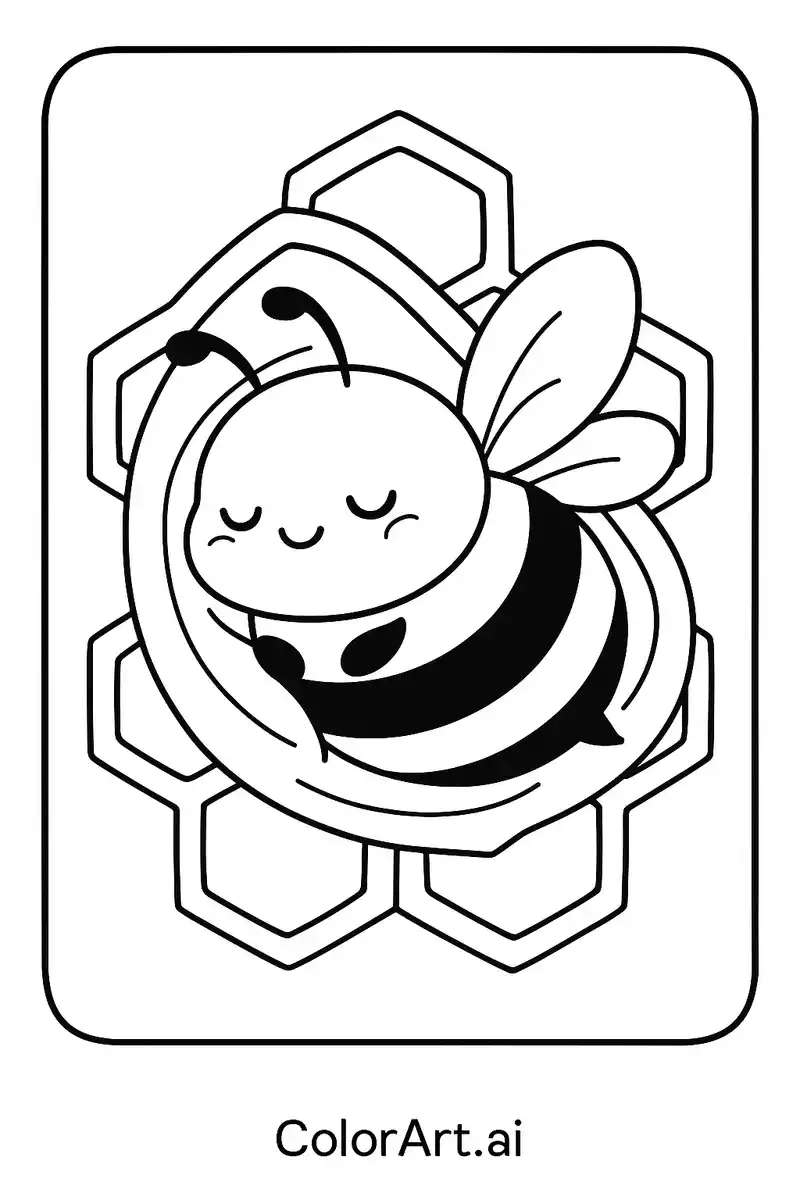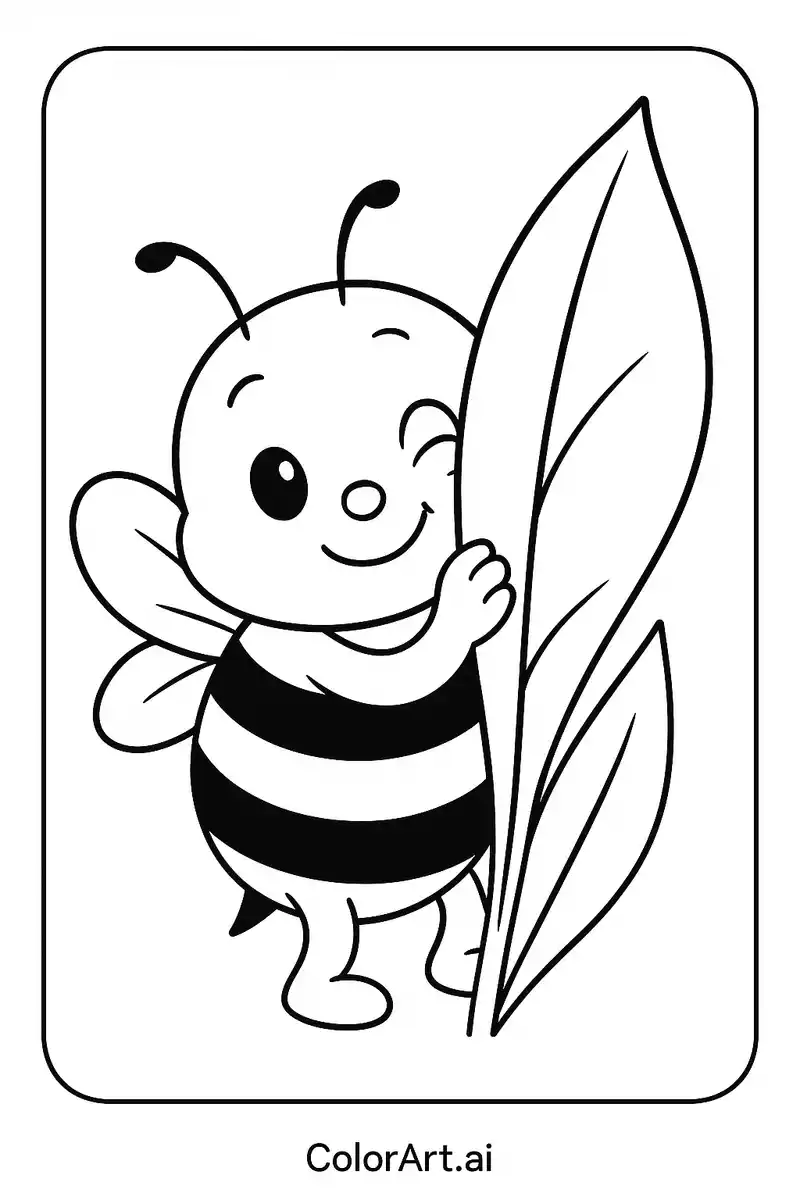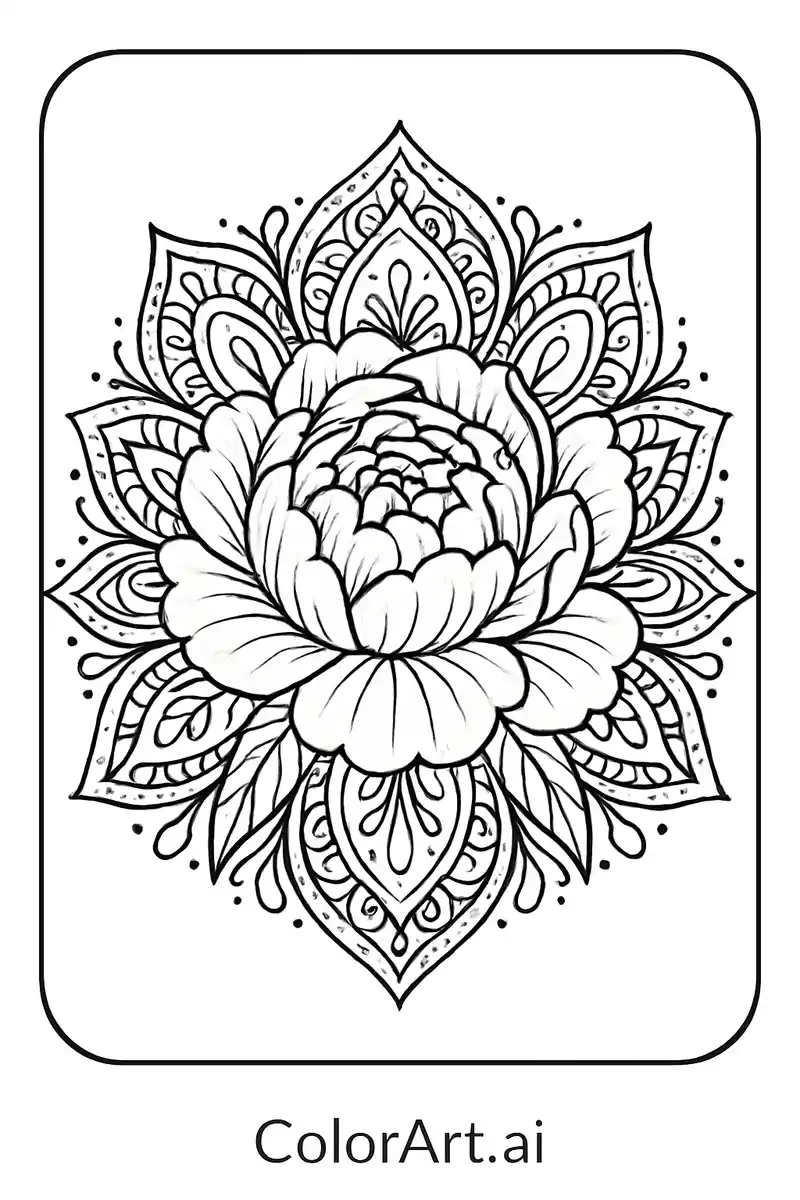
Fine dots, varied line weights, and paisley-style filigree enhance the complexity. Tiny beads along petal edges and delicate flourishes between layers create visual texture and movement. The linework varies from bold outlines in the center to finer, more intricate patterns in the periphery. These decorative elements offer moments of focus and freedom for the colorist—especially helpful in slowing down the mind during coloring. The absence of a hard outer frame lets the mandala feel expansive and connected with its surroundings.
This mandala follows 8-fold radial symmetry, a number associated with balance, harmony, and the cycles of nature (like the 8 limbs of yoga or 8 directions of a compass). The design honors natural geometric rhythms—circular repetition, proportional spacing, and mirroring. The combination of floral realism and sacred geometry brings both grounding and transcendence. Each layer reflects both spiritual ascent and inner exploration, making this a powerful tool for meditative coloring and reflection.
🎨 Coloring Tips for Kids and Adults
Central Focus Coloring:
- Recommended Palette: Soft rose tones such as #FFB6C1 (light pink), #FFC0CB (pink), and #DC143C (crimson) create warmth and gentle focus.
- Symbolism: Pinks and reds enhance emotional healing, love, and heart-centered awareness. Soft peach #FFDAB9 or lavender #E6E6FA offers a calming alternative.
- Techniques: Use layering to create petal depth—darker tones at the base, lighter at the tips. Colored pencil gradients or light watercolor washes work well.
Radiating Pattern Colors:
- Color Strategy: Try an analogous palette (colors next to each other on the wheel) like pink, purple, and blue (#8A2BE2, #9370DB, #4169E1) for harmony.
- Energy Flow: Use cooler colors near the edges to draw the viewer inward, or warm golds and oranges for a radiant outward burst.
- Rhythmic Repetition: Alternate two or three colors across symmetrical points for a calming rhythm.
Detail and Accent Colors:
- Accent Suggestions: Use #FFD700 (gold), #C0C0C0 (silver), or #00CED1 (turquoise) to highlight seed shapes, dots, and flourishes.
- Visual Rest: Leave some negative space white or use pale #F0F8FF (Alice Blue) to provide breathing room between complex sections.
- Metallic Use: Apply metallic gel pens or pencils to add sparkle without overwhelming the page.
🧘 Meditative Coloring Approaches
Symmetrical Meditation Method:
- Begin at the flower center and slowly work outward.
- Color opposing segments at the same time for energetic balance.
- Match breath to strokes: inhale—color a line, exhale—release tension.
- Embrace the rhythm of petal repetition as a mindfulness anchor.
Color Intention Setting:
- Choose colors that support your mood or what you need (e.g., calm = blue, joy = yellow).
- Reflect while coloring—“What do I want to let bloom today?”
- This mandala is ideal for opening the heart or grounding scattered thoughts.
Progressive Complexity Approach:
- Start with large petal shapes to build confidence.
- Gradually move into the finer lacework as your focus deepens.
- Shift between detailed and simple zones to regulate mental energy.
🌈 Skill-Level Adaptations
For Beginners:
- Start by coloring only the central flower with 2–3 tones.
- Use repeating colors across symmetrical shapes to simplify decisions.
- Don’t worry about perfect blending—flat, joyful color is powerful too!
For Advanced Colorists:
- Try smooth gradient transitions within petals (#F08080 to #FFFFFF).
- Use contrasting colors for inner vs. outer petals to enhance depth.
- Apply shadowing techniques with colored pencils to give a 3D effect.
- Experiment with color symbolism (e.g., green = growth, purple = spiritual insight).
CULTURAL CONTEXT
This design blends mandala and lotus symbolism—both revered in Eastern traditions such as Buddhism, Hinduism, and yogic philosophy. The lotus represents purity and awakening, rising from muddy water to bloom untouched. Mandalas are sacred diagrams used for meditation, focus, and transformation. Approach this coloring page with respect and openness—using it not just as a printable pdf or png coloring page, but as a free and intentional spiritual practice. Allow your personal colors to meet the sacred form in harmony.
